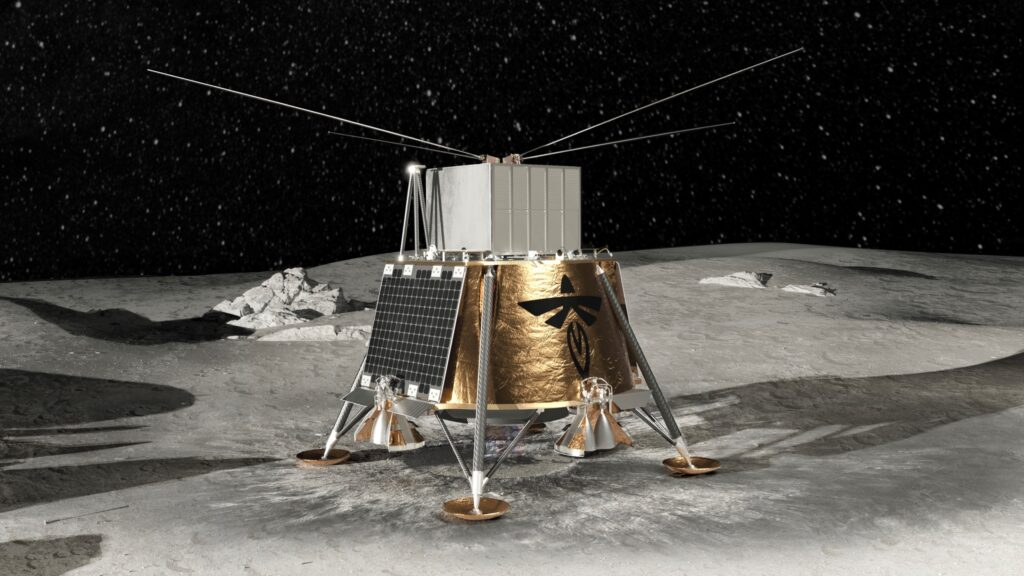Radio telescope will launch to moon's far side in 2025 to hunt for the cosmic Dark Ages
The radio astronomy experiment LuSEE-Night will test technologies for radio telescopes on the far side of the moon.

A small mission to test technology to detect radio waves from the cosmic Dark Ages over 13.4 billion years ago will blast off for the far side of the moon in 2025.
The Lunar Surface Electromagnetic Experiment-Night mission, or LuSEE-Night for short, is a small radio telescope being funded by NASA and the U.S. Department of Energy with involvement from scientists at the Lawrence Berkeley National Laboratory, the Brookhaven National Laboratory, the University of California, Berkeley and the University of Minnesota. LuSEE-Night will blast off as part of NASA's Commercial Lunar Payloads program.
The Dark Ages are the evocative name given to the period of time after the Big Bang, when the first stars and galaxies were only just beginning to form and ionize the neutral hydrogen gas that filled the universe. Little is known about this period, despite efforts by the James Webb Space Telescope to begin probing into this era.
Related: The moon: Everything you need to know about Earth's companion
The neutral hydrogen present during the Dark Ages was able to absorb some of the radiation of the cosmic microwave background, creating a dip in the intensity of radio waves from that era at frequencies between 0.5 and 50 megaHertz.
"We're looking for this very tiny dip that is potentially the Dark Ages signal," said Kaja Rotermund of the Lawrence Berkeley National Laboratory in a statement.
Earth's atmosphere, in conjunction with terrestrial radio interference, obscures this faint signal. The solution is to go to the far side of the moon, where there is no atmosphere and Earth and all its radio noise is not visible.
Breaking space news, the latest updates on rocket launches, skywatching events and more!
"If you're on the far side of the moon, you have a pristine, radio-quiet environment from which you can try to detect this signal from the Dark Ages," said Rotermund. "LuSEE-Night is a mission showing whether we can make these kinds of observations from a location that we've never been in, and also for a frequency range that we've never been able to observe."
LuSEE-Night will be joined on the moon by LuSEE-Lite, which will blast off for Schrödinger Basin, which is located on the far side near the moon's south pole, in 2024. LuSEE-Lite will operate in daylight, but LuSEE-Night will test technologies such as antennas and batteries to see if they can function efficiently in the freezing-cold conditions of lunar night, where the temperature can reach as low as minus 280 degrees Fahrenheit (minus 170 degrees Celsius). While the lunar far side experiences daytime as well as night-time, night lasts for two weeks, so any long-duration mission to the moon has to deal with that. Because LuSEE-Night will not be able to see Earth from the lunar far side, a relay satellite will have to communicate with Earth on its behalf.
Rotermund and her colleagues at Berkeley Lab are building two pairs of antennas that will fly on LuSEE-Night to try and detect the hydrogen absorption in the radio waves from the cosmic Dark Ages. The antennas are 20 feet (6 meters) long from tip to tip, and are spring-loaded and designed to uncoil upon landing.
"The engineering to land a scientific instrument on the far side of the moon alone is a huge accomplishment," said Aritoki Suzuki of Berkeley Labs. "If we can demonstrate that this is possible — that we can get there, deploy and survive the night — that can open up the field for the community and future experiments."
The first-ever successful landing on the lunar far side was in 2019, when China's Chang'e 4 mission touched down and deployed a small rover named Yutu-2.
LuSEE-Night could be seen as a precursor for a much larger and more ambitious radio telescope. Scientists have long proposed the building of a radio telescope on the far side of the moon that could probe the entirety of the radio spectrum without radio frequency interference from Earth, and therefore spot frequencies undetectable from our planet. Such a telescope would pose intriguing engineering challenges, such as how to build a large telescope in the moon's low gravity and cold temperatures.
A larger, more sensitive telescope may well be needed, for LuSEE-Night is not necessarily expected to be able to detect the Dark Ages. First and foremost it is a technology demonstrator, and any scientific results that it can achieve will be a bonus.
LuSEE-Night will be flown to the moon in partnership with Firefly Aerospace, which is building the "Blue Ghost" lander that will carry it. The plan is for LuSEE-Night to function on the moon for 18 months, recharging its batteries using solar power during the two-week long lunar days.

Keith Cooper is a freelance science journalist and editor in the United Kingdom, and has a degree in physics and astrophysics from the University of Manchester. He's the author of "The Contact Paradox: Challenging Our Assumptions in the Search for Extraterrestrial Intelligence" (Bloomsbury Sigma, 2020) and has written articles on astronomy, space, physics and astrobiology for a multitude of magazines and websites.

